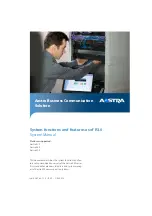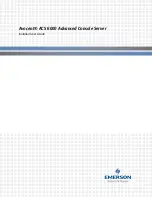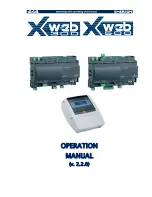
Software and configuration utilities 80
Configuration Replication Utility
ConRep is shipped in the SmartStart Scripting Toolkit and is a program that works with RBSU to replicate
hardware configuration on ProLiant servers. This utility is run during State 0, Run Hardware Configuration
Utility, when doing a scripted server deployment. ConRep reads the state of the system environment
variables to determine the configuration and then writes the results to an editable script file. This file can
then be deployed across multiple servers with similar hardware and software components. For more
information, refer to the
SmartStart Scripting Toolkit User Guide
on the HP website
(
http://h18004.www1.hp.com/products/servers/management/toolkit/documentation.html
).
HP ROM-Based Setup Utility
RBSU, an embedded configuration utility, performs a wide range of configuration activities that may
include:
•
Configuring system devices and installed options
•
Displaying system information
•
Selecting the primary boot controller
•
Configuring memory options
•
Language selection
For more information on RBSU, refer to the
HP ROM-Based Setup Utility User Guide
on the Documentation
CD or the HP website (
http://www.hp.com/servers/smartstart
).
Using RBSU
The first time you power up the server, the system prompts you to enter RBSU and select a language.
Default configuration settings are made at this time and can be changed later. Most of the features in
RBSU are not required to set up the server.
To navigate RBSU, use the following keys:
•
To access RBSU, press the
F9
key during power up when prompted in the upper right corner of the
screen.
•
To navigate the menu system, use the arrow keys.
•
To make selections, press the
Enter
key.
IMPORTANT:
RBSU automatically saves settings when you press the
Enter
key. The utility does not prompt
you for confirmation of settings before you exit the utility. To change a selected setting, you must select a
different setting and press the
Enter
key.
Auto-configuration process
The auto-configuration process automatically runs when you boot the server for the first time. During the
power-up sequence, the system ROM automatically configures the entire system without needing any
intervention. During this process, the ORCA utility, in most cases, automatically configures the array to a
default setting based on the number of drives connected to the server.
NOTE:
The server may not support all the following examples.
NOTE:
If the boot drive is not empty or has been written to in the past, ORCA does not automatically
configure the array. You must run ORCA to configure the array settings.
Drives installed
Drives used
RAID level
1 1
RAID
0
2 2
RAID
1
Summary of Contents for ProLiant DL380 Generation 4
Page 98: ...Troubleshooting 98 ...
Page 104: ...Troubleshooting 104 ...
Page 110: ...Regulatory compliance notices 110 Power cord statement for Japan ...
















































